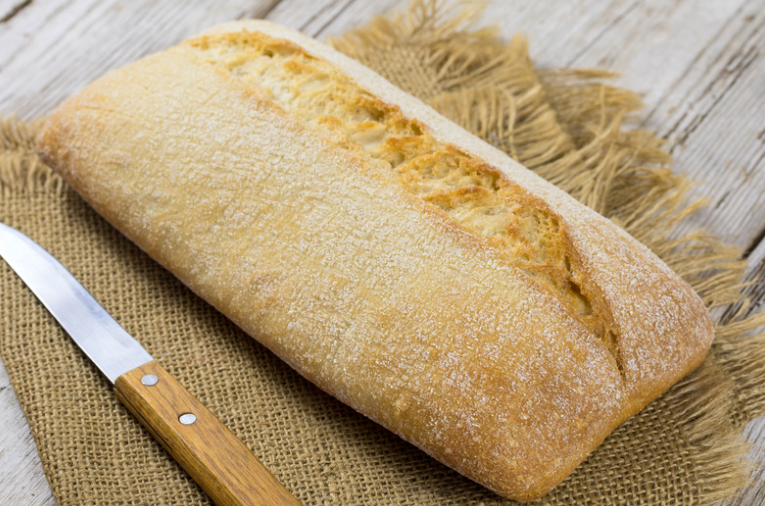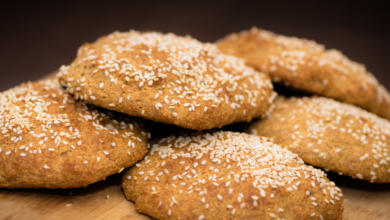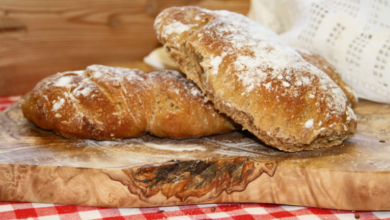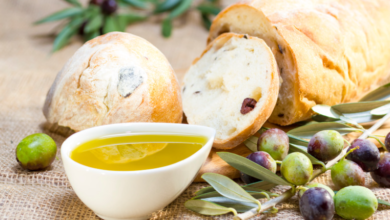How to Soften Ciabatta Bread – The Secret Revealed!

What To Know
- Another simple method is to wrap your ciabatta bread in a damp towel and let it sit for a few hours.
- Storing your ciabatta bread in a bread box can help to keep it soft for longer.
- Place your ciabatta bread in a toaster oven and toast it on the lowest setting for 2-3 minutes, or until it is heated through.
Ciabatta bread, with its signature open crumb and crispy crust, is a beloved staple in many households. However, it can sometimes lose its softness and become stale, especially after a few days. But fear not! With the right techniques, you can restore your ciabatta bread to its former glory and enjoy its deliciousness once again.
Why Does Ciabatta Bread Get Stale?
Staling is a natural process that occurs when bread loses moisture. As the bread cools, the starch molecules in the bread crystallize and become less soluble, resulting in a harder texture. The high moisture content of ciabatta bread makes it particularly susceptible to staling.
How to Soften Ciabatta Bread
1. Steam It
One of the most effective ways to soften ciabatta bread is to steam it. This method helps to rehydrate the bread and restore its softness.
- In the Oven: Preheat your oven to 350°F (175°C). Place your ciabatta bread on a baking sheet and cover it with aluminum foil. Bake for 5-10 minutes, or until the bread is heated through.
- In the Microwave: Place a damp paper towel over your ciabatta bread and microwave it on high for 10-15 seconds. Be careful not to overcook the bread, as it can become soggy.
2. Wrap It in a Damp Towel
Another simple method is to wrap your ciabatta bread in a damp towel and let it sit for a few hours. The moisture from the towel will help to soften the bread.
3. Spritz It with Water
If you’re short on time, you can simply spritz your ciabatta bread with water and let it sit for a few minutes. This will help to rehydrate the bread and make it softer.
4. Use a Bread Box
Storing your ciabatta bread in a bread box can help to keep it soft for longer. The bread box creates a humid environment that prevents the bread from drying out.
5. Freeze It
If you won’t be using your ciabatta bread right away, you can freeze it to preserve its freshness. To freeze your bread, wrap it tightly in plastic wrap and place it in a freezer-safe bag. When you’re ready to use it, thaw the bread overnight in the refrigerator or on the counter for several hours.
6. Reheat It
If your ciabatta bread has already become stale, you can reheat it to soften it. Reheating the bread will help to drive off any excess moisture and restore its crispy crust.
- In the Oven: Preheat your oven to 350°F (175°C). Place your ciabatta bread on a baking sheet and reheat it for 5-10 minutes, or until it is heated through.
- In the Toaster Oven: Place your ciabatta bread in a toaster oven and toast it on the lowest setting for 2-3 minutes, or until it is heated through.
7. Make Croutons
If your ciabatta bread is too stale to eat, you can make croutons out of it. Croutons are a delicious addition to salads, soups, and casseroles. To make croutons, cut your ciabatta bread into cubes and toss them with olive oil, salt, and pepper. Bake the croutons in a preheated oven at 350°F (175°C) for 10-15 minutes, or until they are golden brown and crispy.
The Verdict
Softening ciabatta bread is a simple process that can be achieved using a variety of methods. By following the tips outlined above, you can enjoy soft and delicious ciabatta bread for days to come.
Answers to Your Most Common Questions
Q: Why does my ciabatta bread become hard so quickly?
A: Ciabatta bread has a high moisture content, which makes it more susceptible to staling. Staling occurs when the bread loses moisture and the starch molecules crystallize.
Q: How can I prevent my ciabatta bread from going stale?
A: Store your ciabatta bread in a bread box or plastic bag to keep it from drying out. You can also freeze your bread for longer storage.
Q: Can I reheat ciabatta bread after it has gone stale?
A: Yes, you can reheat ciabatta bread in the oven or toaster oven to restore its softness.





